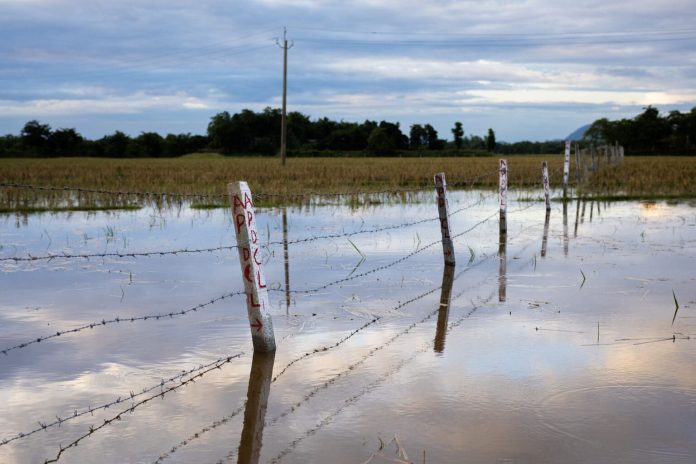Dhubri, Assam :The Assam government’s ambitious plan to build a 3400 MW thermal power plant in Dhubri district has triggered widespread fear and anxiety among thousands of Miya Muslim families, many of whom have lived on the land for generations. The proposed project, under the Assam Thermal Power Generation Project Promotion Policy 2025, spans over 3,000 bighas of land across four villages: Chirakuta Charuabakhra, Santoshpur, Chirakuta Part-1, and Chirakuta Part-2, reported the Frontline.
While the government hails the project as a step toward energy security and job creation, locals allege that it will displace nearly 10,000 people, primarily landless Miya Muslims engaged in agriculture and fishing. Many fear losing not only their homes and livelihoods but also their ancestral roots.
“We have lived here since rice cost just 8 to 12 annas per kilo,” said 80-year-old Rahima Khatun of Santoshpur village. “I have more documents than Himanta Biswa Sarma’s family. How can they evict us?”
Chief Minister Himanta Biswa Sarma visited the site on June 24, attempting to reassure residents that those with legal documents would be compensated and rehabilitated. However, skepticism remains high among the locals. “He has made false promises before. We won’t believe anything until we are rehabilitated first,” said 30-year-old migrant worker Majibar Rahman.
The move to shift the plant to Dhubri comes after widespread protests forced the government to abandon its initial site in the tribal-dominated Kokrajhar district. Activists argue that evicting Muslim-majority communities is easier politically and warn that such actions may deepen communal divisions.
A temporary police camp has already been set up in Charuabakhra village, and fencing by Assam Power Distribution Company Limited (APDCL) has begun — seen by locals as a sign of an impending forced takeover. Residents also report the withdrawal of essential health services, including ASHA and ANM workers, from the area, raising concerns about maternal health, especially among pregnant women.
“This is harassment in the name of development,” a local resident said anonymously. Sixty-year-old Aklima Begum lamented, “No Hindu will be harassed like this under Himanta’s regime. If we are forced to leave this land, Allah will not forgive those responsible.”
The villages targeted for acquisition are not barren wastelands. Over the years, the government has built schools, a public health center, a stadium, and drinking water infrastructure under the Jal Jeevan Mission. Dighal Leja Primary School and several graveyards dating back to pre-independence India are also located within the earmarked zone.
Jakir Hussain, an electrician from Charuabakhra, pointed to his father’s grave beside his house. “This is our land, our heritage. If we are removed, our history will be erased,” he said.
According to locals, around 120 of the 2,000 families have legal land documents (Miyadi patta), while the rest reside on government land, some of whom have benefited from welfare schemes such as Atal Amrit Abhiyan and PMAY.
Environmental concerns have also been raised. “Coal-based thermal plants threaten the environment and disrupt the microclimate,” warned Guwahati-based researcher Mirza Zulfiqur Rahman.
Residents have been asked to vacate by July 6, triggering distress and desperation. “We are living in fear—of losing our homes, our schools, and even our ancestors’ graves,” said 35-year-old Halima Begum of Santoshpur.
As Assam’s projected energy demand is expected to rise to 5,000 MW by 2030 and 7,000 MW by 2035, questions remain whether energy development must come at the cost of human displacement and social unrest.




